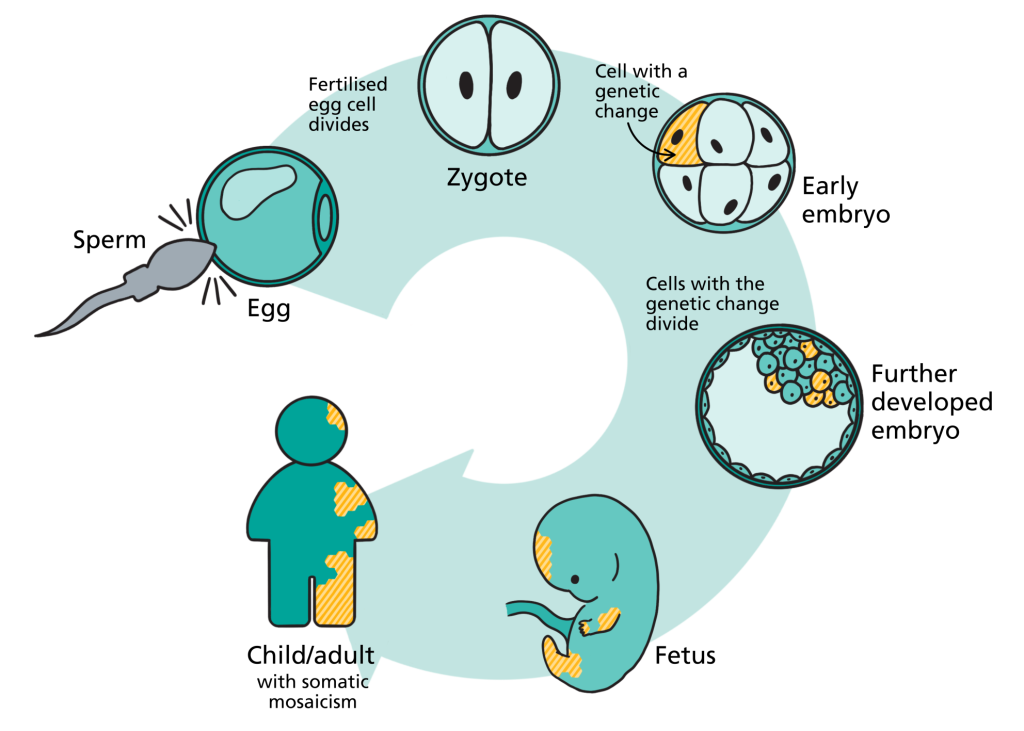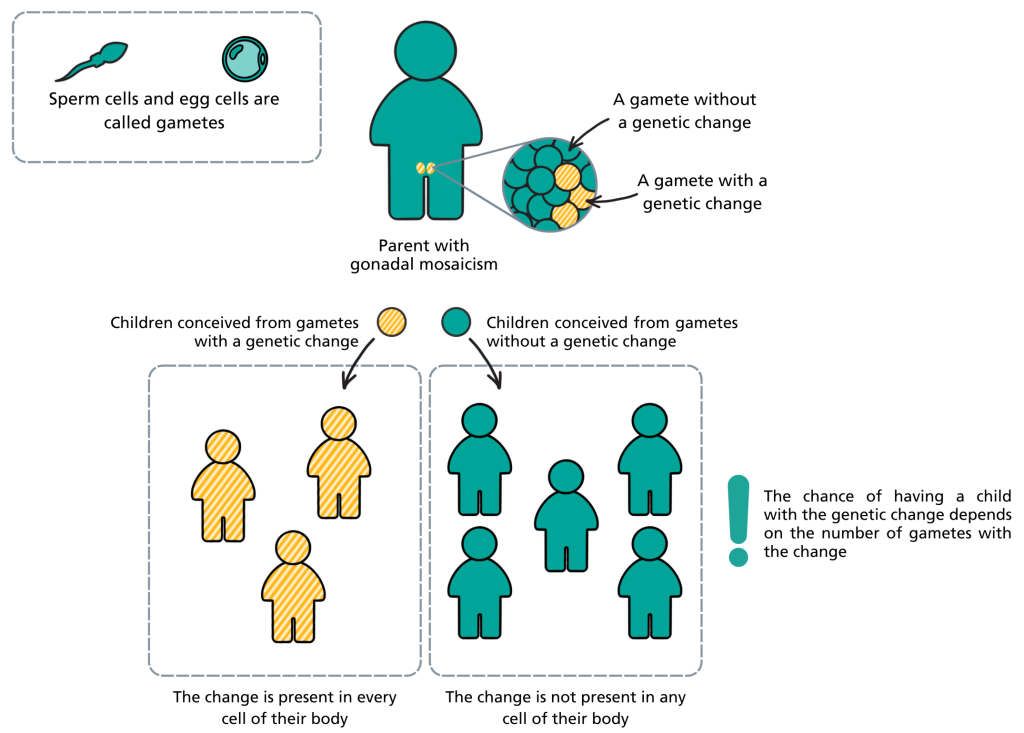Visual communication aid: Mosaicism
These communication aids have been produced to complement discussions about somatic mosaicism and gonadal (germline) mosaicism during consultations with patients.
View and download communication aid(s)
There are two communication aids available to view and download (.pdf):
Double-sided printing in colour is recommended (but not required). All content is also included below in an accessible format.
More information about these and other VCAs is available in this article.
Somatic mosaicism
Our bodies are made of trillions of cells, each with a specific role. Most cells contain a nucleus that holds our genetic information, including our genes which are the instructions for how our body works.
When a sperm fertilises an egg, the fertilised egg divides into more cells repeatedly, eventually forming an embryo that develops into a baby, and later, an adult. Each of these cells carry a copy of the same genetic information.
Sometimes when cells divide, small errors can occur when copying this genetic information, like a spelling mistake. This is called a ‘variant’ or ‘change’. These changes are usually repaired by the body, but sometimes cells with a change continue to grow and divide. This can result in some cells having different genetic instructions than others, known as somatic mosaicism (figure 1).
The number and location of cells with the change depends on when and where the error happened during development.
In many cases, genetic changes do not cause any problems. If the change affects how the cell works, this can cause health problems.
Whether a mosaic genetic change can be passed on to children depends on whether a person’s sperm or eggs carry the change.
Gonadal (germline) mosaicism
If a genetic change occurs in cells that create eggs or sperm (gametes), this will mean either some or all of that person’s sperm or eggs will carry the gene change. This is known as germline mosaicism, or gonadal mosaicism (figure 2).
As a result, the person’s children could inherit the genetic change. The likelihood of this happening depends on how many gametes carry the genetic change. If the genetic change is inherited by a child, all the child’s cells will have the change.
Key phrases
- Gametes: reproductive cells – sperm or eggs. A sperm cell fertilises an egg cell at conception of a pregnancy.
- Gonads: ovaries or testes – the organs that produce gametes.
- Gene change: Changes in a gene or chromosome used to be referred to as ‘mutations’. Now, they are more commonly called changes, alterations or variants.
Resources
For patients
- Unique: Mosaicism (pdf)

